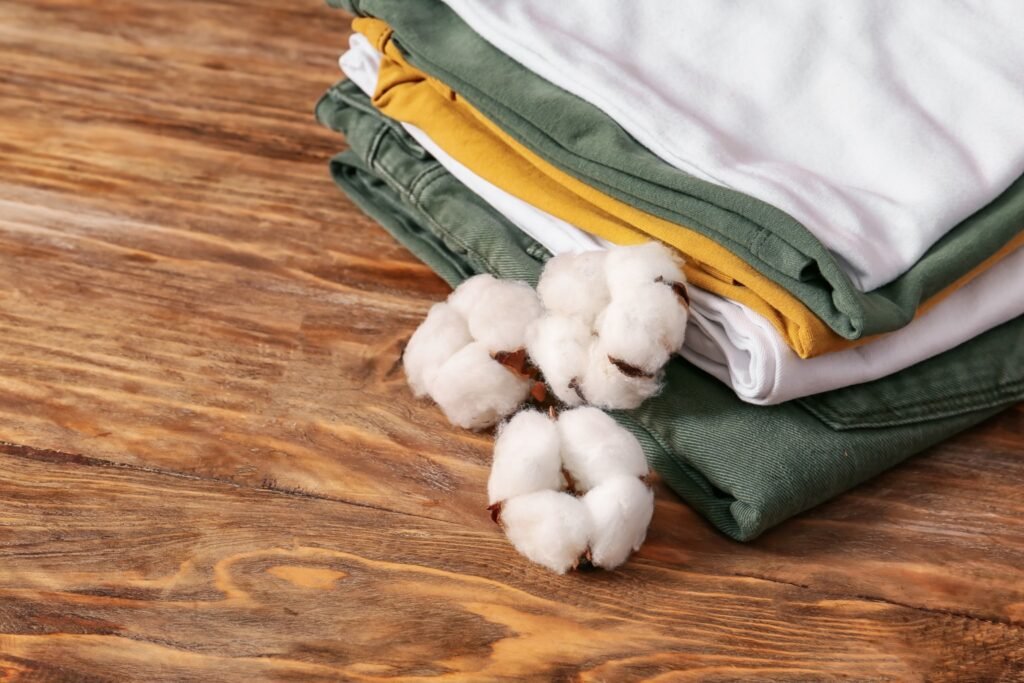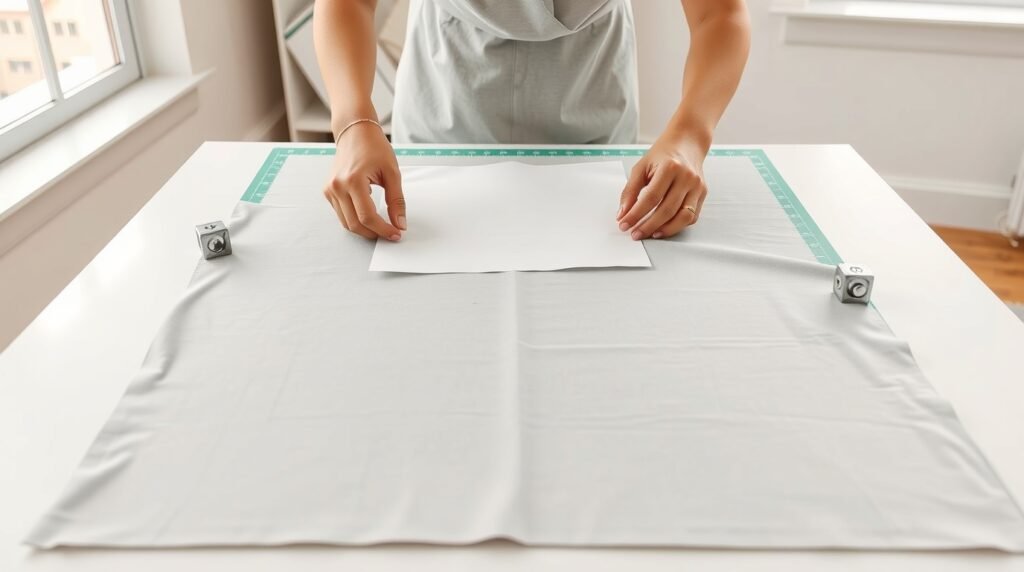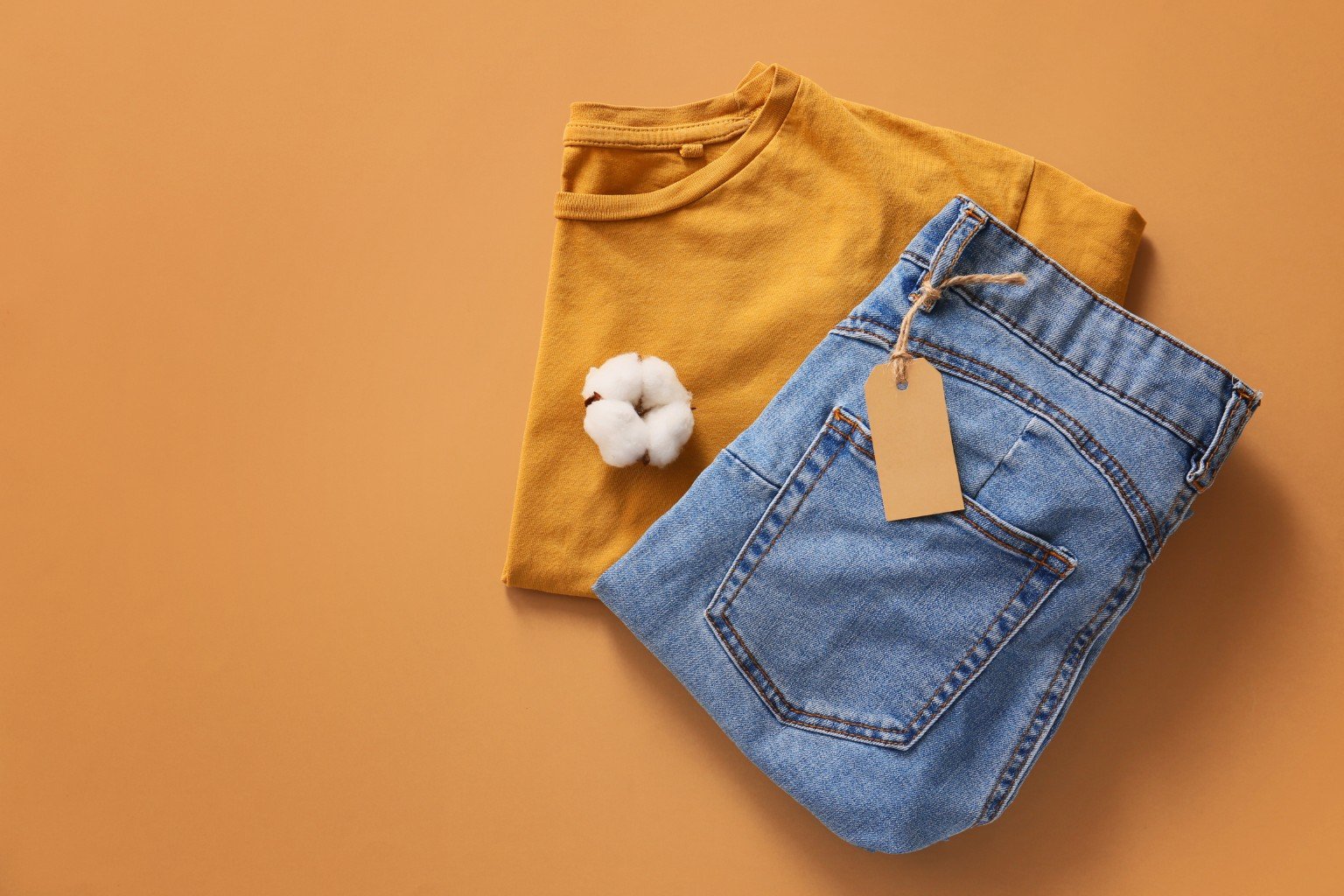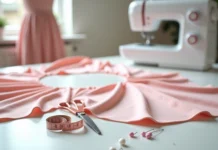Many people choose 100% cotton workout clothes because the fabric is soft, breathable, and comfortable for everyday wear. Cotton isn’t the best option for high-intensity workouts since it absorbs sweat and dries slowly, but it works well for yoga, stretching, or casual gym sessions.
This guide gives you step-by-step instructions to sew your own cotton workout clothes at home, from choosing the right pattern to finishing the garment. With the right fabric and simple sewing techniques, you can create pieces that are comfortable, practical, and suited for light exercise.
Step 1: Choose the Right Pattern

Options for Workout Clothes
The first step is selecting a pattern. Common choices include a T-shirt, tank top, shorts, or leggings. Each piece offers a different level of coverage and movement, so choose based on your workout style.
Where to Find Patterns
Beginner-friendly sewing patterns are widely available online or at local sewing shops. Many brands label patterns as “easy” or “beginner,” making them a safe starting point.
Why Pattern Choice Matters
The right pattern ensures comfort and freedom of movement. Workout clothes should fit close to the body without restricting flexibility, especially during stretching or bending.
Step 2: Select the Best Cotton Fabric

Types of Cotton Fabric
Not all cotton works the same for workout clothes. Quilting cotton is sturdy and soft but has almost no stretch, so it feels restrictive during exercise. Lightweight cotton is breathable and airy, but it can be too thin and wear out quickly. Jersey knit cotton is the best choice because it stretches with movement, recovers its shape, and feels soft against the skin, making it more suitable for workout garments.
Why Jersey Knit Works Best
Jersey knit cotton moves with your body, making it more practical for workouts than woven fabrics. It also feels softer against the skin, which adds comfort during exercise.
Tips for Buying Quality Fabric
Check fabric weight before purchase. Medium-weight jersey knit with good elasticity is ideal. Always buy from trusted sewing stores to avoid stiff or poor-quality cotton.
Step 3: Prepare the Fabric Before Sewing

Pre-Wash to Prevent Shrinking
Cotton fabric almost always shrinks after the first wash. Pre-washing the fabric in cold water ensures the finished workout clothes keep their proper size. Dry it fully before moving to the next step.
Iron for Smooth Cutting
Wrinkled fabric makes cutting inaccurate. Iron the cotton on a medium setting to smooth out creases. A flat surface makes the pattern pieces more precise.
Lay Fabric Flat for Accuracy
Spread the fabric evenly on a large table or cutting mat. Keep edges aligned and free of folds. A flat base prevents uneven shapes when cutting pattern pieces.
Step 4: Cut the Fabric Accurately
Accurate cutting is essential in sewing. Crooked cuts or ignored markings can cause poor fit, uneven seams, and wasted fabric. With the right tools and methods, you can cut fabric pieces that align perfectly and sew together smoothly.
Follow the Pattern Markings Carefully
Pattern markings guide the entire project. Place your pattern on fabric with the grainline arrow parallel to the fabric’s edge to prevent twisting or distortion. Pin or use weights to secure it. Transfer notches, darts, and fold lines with tailor’s chalk, washable pens, or small snips in the seam allowance. Always check that you’re cutting mirrored pieces where needed—this avoids mistakes like two left sleeves.
Use Sharp Fabric Scissors or a Rotary Cutter
Sharp cutting tools give clean edges. Reserve fabric scissors only for fabric, not paper. For straight lines or knit fabrics, a rotary cutter with a cutting mat and ruler provides precise results. Cut steadily and avoid rushing to prevent jagged edges. For slippery fabrics, place tissue paper underneath to reduce shifting. Good lighting ensures accurate cuts and visibility of markings.
Tips for Keeping Edges Clean
Neat edges reduce fraying and make sewing easier. Handle cut pieces gently and keep them flat until sewing. Use pinking shears for cotton or linen, or finish edges with a zigzag stitch or serger for durability. Always cut on a flat, stable surface with fabric pressed smooth. Match your edge-finishing method to the fabric type: heavy fabrics need secure finishes, while knits may only need trimming.
Considerations for 100% Cotton Workout Clothes

Comfort and Breathability
Cotton feels soft against the skin and lets air flow, which makes it comfortable for long wear. It’s a natural choice for people who prefer breathable fabrics.
Sweat Absorption
Cotton absorbs sweat quickly but doesn’t dry fast. During high-intensity workouts, this can leave clothes feeling heavy and damp. That makes it less suitable for activities where you’ll sweat a lot.
Best Uses and Alternatives
100% cotton works best for yoga, stretching, or casual exercise. For running, cardio, or strength training, blends like cotton with spandex are better since they add stretch and improve sweat control.
Conclusion
Making 100% cotton workout clothes is simple if you follow the right steps. Choose a suitable pattern, pick quality cotton like jersey knit, prepare the fabric, cut carefully, and sew with strong seams. Each step helps create clothes that fit well and feel comfortable.
Cotton offers softness and breathability, but it doesn’t handle sweat well. It’s best for low-impact activities like yoga, stretching, or casual exercise where comfort matters more than performance.
Don’t be afraid to experiment with patterns and fabrics. Trying different cotton types or blending fabrics can help you design workout clothes that match both your style and your needs.






